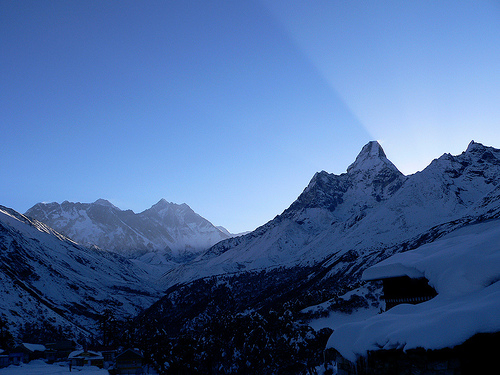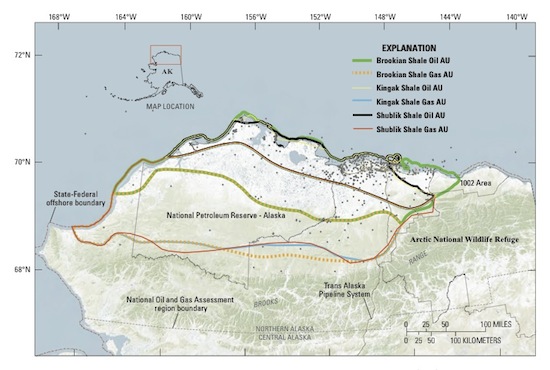Alaska’s been coasting on its stores of easy-access oil, but a new report from the U.S. Geological Survey shows that the state has a motherlode of shale oil and natural gas. You know what means — here come the frackers.
The numbers are impressive: as much as 80 trillion cubic feet of frackable natural gas and up to 2 billion barrels of shale oil. To put that in perspective, the natural gas resources are smaller than the Marcellus Shale, which underlays Pennsylvania and New York, and smaller than Texas’ Haynesville and Eagle Ford shale formations — but it’s still the fourth biggest parcel in the U.S. The oil shale is the second biggest deposit in the country; only North Dakota’s Bakken Formation has more.
If you’re inclined to look on the bright side about oil and gas fracking, there are a couple of positives here. These resources aren’t in developed areas, which minimizes the health risks that come with fracking. And for the most part, these resources are also outside of the Arctic National Wildlife Refuge, so fracking would be better for the local ecology than drilling for conventional oil in ANWR.

But oil and gas development always carries risks. Plus, if these natural gas resources are developed, Alaska will likely have to liquify the gas in order to ship it off and sell it. Creating liquified natural gas takes a ton of energy and helps wipe out natural gas’ carbon advantage over fuels like coal and oil.



